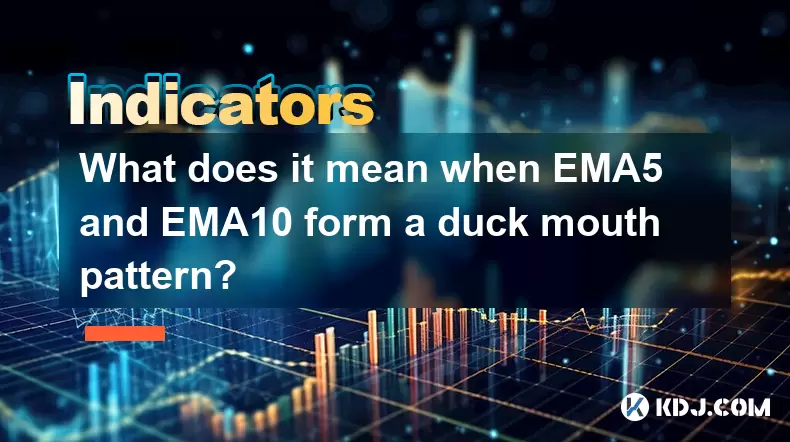-
 Bitcoin
Bitcoin $118000
0.67% -
 Ethereum
Ethereum $3750
0.71% -
 XRP
XRP $3.183
1.61% -
 Tether USDt
Tether USDt $1.000
-0.01% -
 BNB
BNB $788.1
1.21% -
 Solana
Solana $186.0
0.85% -
 USDC
USDC $0.9999
-0.02% -
 Dogecoin
Dogecoin $0.2373
1.25% -
 TRON
TRON $0.3204
1.76% -
 Cardano
Cardano $0.8266
1.85% -
 Hyperliquid
Hyperliquid $44.04
1.28% -
 Sui
Sui $4.192
5.88% -
 Stellar
Stellar $0.4399
2.63% -
 Chainlink
Chainlink $18.40
1.19% -
 Hedera
Hedera $0.2842
9.06% -
 Bitcoin Cash
Bitcoin Cash $560.5
2.46% -
 Avalanche
Avalanche $24.99
4.58% -
 Litecoin
Litecoin $114.5
1.25% -
 UNUS SED LEO
UNUS SED LEO $8.980
-0.03% -
 Shiba Inu
Shiba Inu $0.00001406
0.53% -
 Toncoin
Toncoin $3.306
4.27% -
 Ethena USDe
Ethena USDe $1.001
0.03% -
 Polkadot
Polkadot $4.169
2.37% -
 Uniswap
Uniswap $10.56
1.95% -
 Monero
Monero $322.8
1.06% -
 Dai
Dai $0.0000
0.00% -
 Bitget Token
Bitget Token $4.545
0.12% -
 Pepe
Pepe $0.00001261
1.29% -
 Aave
Aave $296.5
1.27% -
 Cronos
Cronos $0.1379
5.90%
What does it mean when EMA5 and EMA10 form a duck mouth pattern?
The duck mouth pattern occurs when EMA5 crosses above EMA10 after consolidation, signaling potential bullish momentum in crypto markets.
Jul 27, 2025 at 12:56 am

Understanding the EMA5 and EMA10 Indicators
The Exponential Moving Average (EMA) is a widely used technical analysis tool in the cryptocurrency trading community. Unlike the Simple Moving Average (SMA), which assigns equal weight to all data points, the EMA gives more weight to recent price action, making it more responsive to new information. The EMA5 represents the average closing price of an asset over the past 5 periods, while the EMA10 covers the last 10 periods. These two moving averages are frequently used together to identify short-term trends and potential entry or exit points. Traders monitor the relationship between the EMA5 and EMA10 lines on price charts to detect shifts in momentum. When these two EMAs interact in specific ways, such as forming a duck mouth pattern, it may signal a particular market condition.
What Is the Duck Mouth Pattern?
The duck mouth pattern is a colloquial term used among crypto traders to describe a specific visual configuration formed by the EMA5 and EMA10 lines on a price chart. This pattern occurs when the EMA5 crosses above the EMA10 after both lines have been moving closely together in a horizontal or slightly declining direction. The resulting shape resembles an open duck’s mouth, with the EMA5 acting as the upper beak and the EMA10 as the lower beak. This formation typically appears during periods of consolidation or low volatility, just before a potential upward breakout. The key visual cue is the slight divergence between the two EMAs, where the shorter-term EMA5 begins to pull away from the longer-term EMA10 in an upward direction.
How to Identify the Duck Mouth Pattern on a Chart
To spot the duck mouth pattern, traders must follow a series of observational steps using a candlestick chart with EMA overlays:
- Open a cryptocurrency trading platform such as TradingView, Binance, or Bybit.
- Select a timeframe—common choices include the 15-minute, 1-hour, or 4-hour charts.
- Apply two moving average indicators: set one to EMA with a period of 5 and another to EMA with a period of 10.
- Observe the chart for a phase where both EMAs are nearly overlapping and moving sideways or slightly downward.
- Look for the moment when the EMA5 begins to rise and separates from the EMA10, creating a small gap between them.
- Confirm the pattern by checking that the price candles are also starting to rise above both EMAs, ideally accompanied by increasing volume.
This pattern is more reliable when it forms after a prolonged downtrend or consolidation phase. The visual widening between the two EMAs is what gives the pattern its name, and traders often use it as a trigger to consider entering a long position.
Interpreting the Duck Mouth Pattern in Crypto Markets
In the context of cryptocurrency trading, the duck mouth pattern suggests a shift in short-term momentum from bearish to bullish. Because the EMA5 reacts faster to price changes than the EMA10, its upward crossover indicates that recent buying pressure is increasing. When this occurs during a consolidation period, it may signal that sellers are losing control and buyers are beginning to dominate. The pattern is not a standalone signal; it gains significance when combined with other indicators. For example, traders might look for RSI (Relative Strength Index) rising above 50, or MACD showing a bullish crossover, to confirm the strength of the move. Volume analysis is also critical—a spike in trading volume during the formation of the duck mouth adds credibility to the breakout.
Trading Strategies Based on the Duck Mouth Pattern
Traders who recognize the duck mouth pattern can use it to structure a precise entry and risk management plan. Here is a detailed operational approach:
- Wait for the EMA5 to clearly separate from the EMA10 in an upward direction.
- Ensure that the price is closing above both EMAs for at least two consecutive candles.
- Check for supporting volume increase—a noticeable rise in volume confirms participation.
- Enter a long position at the close of the confirmation candle or on the opening of the next candle.
- Place a stop-loss order just below the most recent swing low or below the EMA10 line.
- Set a take-profit target based on recent resistance levels or use a risk-reward ratio of at least 1:2.
Some traders also use this pattern in conjunction with support and resistance zones. If the duck mouth forms near a known support level, the probability of a successful breakout increases. It is essential to avoid acting on false signals—sometimes the EMA5 may briefly rise then reverse, creating a fake duck mouth. This is why confirmation through price action and volume is non-negotiable.
Common Misinterpretations and Pitfalls
One of the most frequent errors is mistaking a simple EMA crossover for a valid duck mouth pattern. The true pattern requires a period of consolidation before the separation occurs. Without this consolidation phase, the formation lacks context and may not indicate a meaningful shift in momentum. Another issue arises in highly volatile markets, where EMAs can whipsaw, producing multiple false signals. Traders must also be cautious in low-liquidity altcoin markets, where price manipulation can distort EMA behavior. Using the pattern on higher timeframes reduces noise and increases reliability. Additionally, over-reliance on EMAs without volume confirmation can lead to premature entries. Always cross-verify with at least one additional indicator or chart pattern.
Frequently Asked Questions
Q: Can the duck mouth pattern appear in bearish markets?
Yes, although it is primarily seen as a bullish signal, a similar narrowing and downward separation of EMA5 and EMA10 can occur. This inverted pattern, sometimes called a "reverse duck mouth," may indicate accelerating downside momentum, especially if the EMA5 crosses below the EMA10 after consolidation.
Q: Is the duck mouth pattern effective on all cryptocurrency pairs?
The pattern works best on major pairs like BTC/USDT or ETH/USDT due to higher liquidity and clearer price trends. On low-volume altcoin pairs, erratic price movements can generate misleading EMA configurations, reducing the pattern's reliability.
Q: How long does the duck mouth pattern typically take to form?
Formation duration varies by timeframe. On a 1-hour chart, it may develop over 6 to 12 hours. On a 15-minute chart, it could form within 2 to 4 hours. The key is the consolidation phase preceding the EMA5's upward separation.
Q: Should I use EMA5 and EMA10 exclusively, or combine them with other EMAs?
While EMA5 and EMA10 are sufficient for identifying the duck mouth, adding the EMA20 or EMA50 can provide context about the broader trend. For example, if the price is above the EMA50, the duck mouth carries more bullish weight.
Disclaimer:info@kdj.com
The information provided is not trading advice. kdj.com does not assume any responsibility for any investments made based on the information provided in this article. Cryptocurrencies are highly volatile and it is highly recommended that you invest with caution after thorough research!
If you believe that the content used on this website infringes your copyright, please contact us immediately (info@kdj.com) and we will delete it promptly.
- Meme Coins in July 2025: Bitcoin Takes a Backseat?
- 2025-07-27 10:30:12
- HIFI Price Eyes Breakout: Downtrend Line in the Crosshairs?
- 2025-07-27 10:30:12
- Troller Cat's Meme Economy Prowess: Presale ROI and Viral Domination
- 2025-07-27 10:50:12
- Bitcoin Price Tumble: Chart Patterns Point Downward?
- 2025-07-27 10:50:12
- Ethereum's Bullish Case: Flag Pattern Points to $4,800?
- 2025-07-27 11:10:18
- Ethena (ENA) & Anchorage Digital: A Genius Partnership Sparking a Stablecoin Revolution
- 2025-07-27 11:10:18
Related knowledge

What signal does the ROC send when it rises rapidly from a low level and breaks through the zero axis?
Jul 27,2025 at 10:15am
Understanding the Rate of Change (ROC) IndicatorThe Rate of Change (ROC) is a momentum-based oscillator used in technical analysis to measure the perc...

What does it mean that the rebound is blocked after the moving average is arranged in a short position for the first time?
Jul 26,2025 at 10:51am
Understanding the Short-Term Moving Average ConfigurationWhen traders refer to a 'short position arrangement' in moving averages, they are describing ...

What does it mean that the parabolic indicator and the price break through the previous high at the same time?
Jul 26,2025 at 07:22pm
Understanding the Parabolic Indicator (SAR)The Parabolic SAR (Stop and Reverse) is a technical analysis tool developed by J. Welles Wilder to identify...

What does it mean that the price falls below the short-term moving average after the RSI top divergence?
Jul 26,2025 at 11:01pm
Understanding RSI Top Divergence in Cryptocurrency TradingThe Relative Strength Index (RSI) is a momentum oscillator widely used in cryptocurrency tra...

What does it mean when the moving average is arranged in a bullish pattern but the MACD bar is shortened?
Jul 27,2025 at 06:07am
Understanding the Bullish Moving Average PatternWhen traders observe a bullish moving average pattern, they typically refer to a configuration where s...

What does it mean when the price rises along the 5-day moving average for five consecutive days?
Jul 26,2025 at 08:07am
Understanding the 5-Day Moving Average in Cryptocurrency TradingThe 5-day moving average (5DMA) is a widely used technical indicator in cryptocurrency...

What signal does the ROC send when it rises rapidly from a low level and breaks through the zero axis?
Jul 27,2025 at 10:15am
Understanding the Rate of Change (ROC) IndicatorThe Rate of Change (ROC) is a momentum-based oscillator used in technical analysis to measure the perc...

What does it mean that the rebound is blocked after the moving average is arranged in a short position for the first time?
Jul 26,2025 at 10:51am
Understanding the Short-Term Moving Average ConfigurationWhen traders refer to a 'short position arrangement' in moving averages, they are describing ...

What does it mean that the parabolic indicator and the price break through the previous high at the same time?
Jul 26,2025 at 07:22pm
Understanding the Parabolic Indicator (SAR)The Parabolic SAR (Stop and Reverse) is a technical analysis tool developed by J. Welles Wilder to identify...

What does it mean that the price falls below the short-term moving average after the RSI top divergence?
Jul 26,2025 at 11:01pm
Understanding RSI Top Divergence in Cryptocurrency TradingThe Relative Strength Index (RSI) is a momentum oscillator widely used in cryptocurrency tra...

What does it mean when the moving average is arranged in a bullish pattern but the MACD bar is shortened?
Jul 27,2025 at 06:07am
Understanding the Bullish Moving Average PatternWhen traders observe a bullish moving average pattern, they typically refer to a configuration where s...

What does it mean when the price rises along the 5-day moving average for five consecutive days?
Jul 26,2025 at 08:07am
Understanding the 5-Day Moving Average in Cryptocurrency TradingThe 5-day moving average (5DMA) is a widely used technical indicator in cryptocurrency...
See all articles

























































































